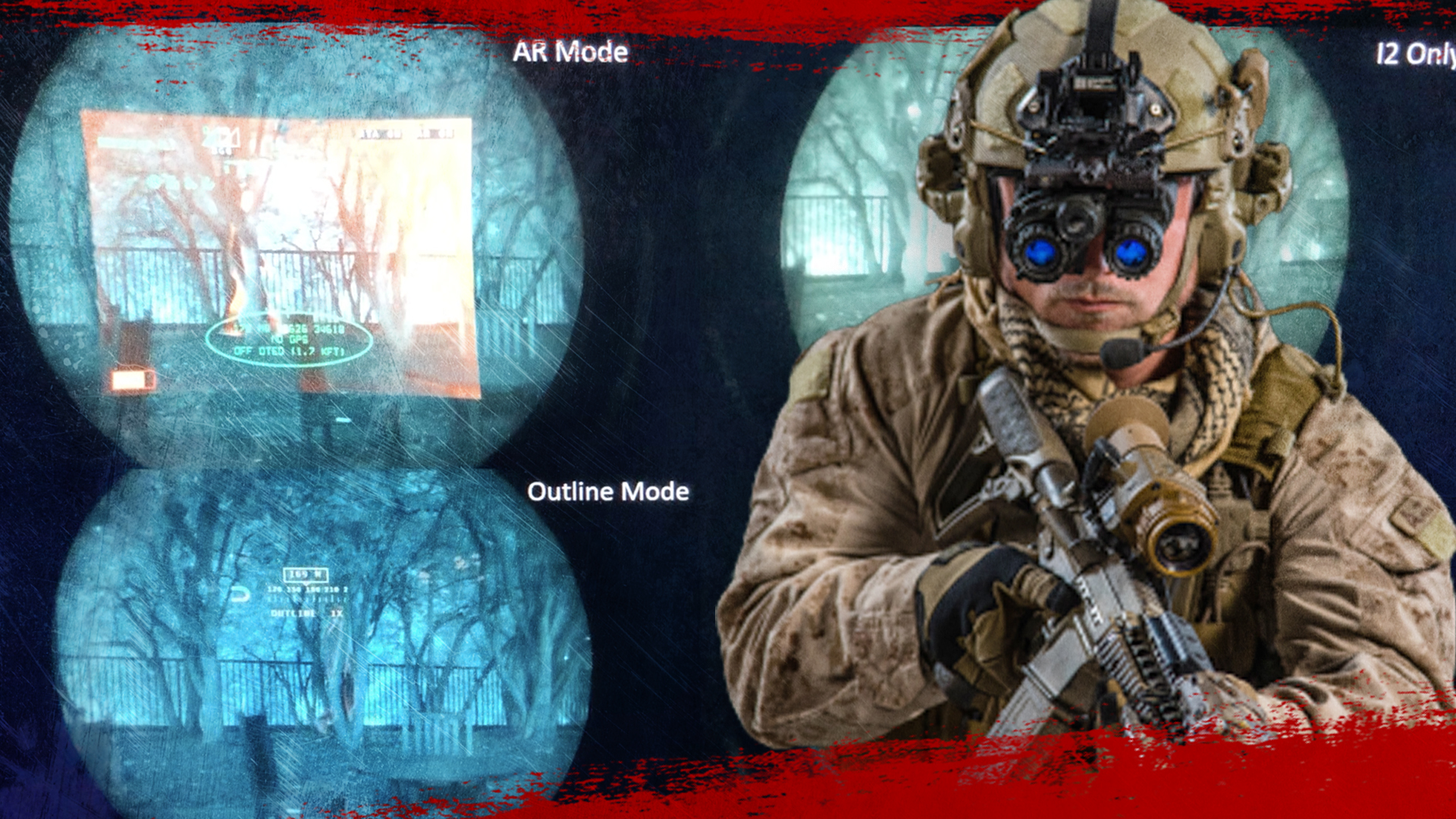

The Army’s new night vision goggles are some of the most exciting pieces of new gear coming to soldiers, so when I recently got the opportunity to try them on myself I couldn’t pass it up.
Officially titled the Enhanced Night Vision Goggles-Binocular, the ENVG-Bs — which the Army has been fielding to soldiers since 2019 — are every bit as badass as we’d heard. The goggles, developed by Elbit Systems of America and L3Harris Technologies, felt lighter than I’d expected, and while it took me a moment to adjust my vision to them, John Ennis, who works in product development on the ENVG-Bs for Elbit, told reporters that young soldiers get it “right away.”
The goggles are powered by four AA batteries and use white phosphor tubes that get rid of the green tint typically found in night vision goggles, and they’ve proven a game-changer for soldiers when it comes to situational awareness, according to Army officials. Lt. Gen. James Richardson, the deputy commander of Army Futures Command, told lawmakers in 2019 that it “is better than anything I’ve experienced in my Army career.”

When you’re looking through the ENVG-Bs, at the top is a compass to show you where you’re heading, and at the bottom is a ring that can display where the enemy (or your teammates) are in relation to you by using the Android Tactical Assault Kit (ATAK). ATAK uses augmented reality to “overlay map graphics and blue force tracking capabilities for increased situational awareness, communication, and mission planning across day and night operations,” according to a recent Army news release.
For example, if a soldier spots the enemy — or even an object like an improvised explosive device — they can tag that person or item on the map, and it would show up as a red diamond through their teammates’ goggles with the distance from each person marked on their display.

“If you saw something on the side of the road that you thought was an IED or something, you could actually mark it, broadcast it out to your team … and it will actually show a mark on there and tell you, ‘Hey, over there, 15 meters away, there’s something bad. Let’s get [explosive ordnance disposal] to come take a look at it, let’s move on over here,’” Ennis explained. “It’s protecting soldiers.”
The same thing can be done for your own teammates, who show up as a blue square on that bottom ring when looking through your ENVG-Bs. Or if you’re not sure what you’re looking at — say you’re seeing someone through a window on the third floor of a building — you can mark them with a question mark.
One of the coolest parts of the ENVG-B, however, is its pairing with the Family of Weapons Sights-Individual (FWS-I) that is mounted on soldiers’ weapons. In practice, the feed from the FWS-I optic appears in the bottom right-hand corner of the ENVG-Bs, so you can see what your weapon is pointed at even if you’re not looking in the same direction. Ideally, that would help troops see around corners or over walls without putting themselves in the line of fire.
Ennis said that Elbit has heard through conversations with rank and file soldiers that service members find they can “maneuver so much faster with the system” and bring in “a lot more information” which helps with situational awareness. And one of the best parts of the new system, he said, is that soldiers can “customize the information” they’re seeing through the ENVG-Bs based on what their job is.
That kind of situational awareness could continue to increase as Elbit works with the Army on finalizing details for its “Iron Vision” system, which would allow soldiers in a combat vehicle to get a clear view of what’s going outside before they exit thanks to sensors placed around the outside of the vehicle. That technology is “ready to go,” Ennis said, and the Army is interested, but they’re still working out details.

While the Army is pouring money and energy into modernization and finding new technology like the ENVG-Bs — and other futuristic heads-up displays like the Integrated Visual Augmentation System — the possibility of it being electronically jammed in conflict with potential enemies like Russia or China still exists, meaning soldiers still need to stay comfortable with the basics: a map and a compass.
“This is great and we love it,” said Jeff Lee, who works in business development with Elbit, of the ENVG-Bs. “But anything that might give off a signal, you have to be prepared to fight without.”
It’s unclear how much each ENVG-B will cost, but one thing is for sure: you don’t want to be the person to lose one.
Feature image: A photo composite showing the view through the ENVG-Bs and a photo of what that piece of gear (and all the other high-tech equipment) look likes when it’s all strapped to your kit.